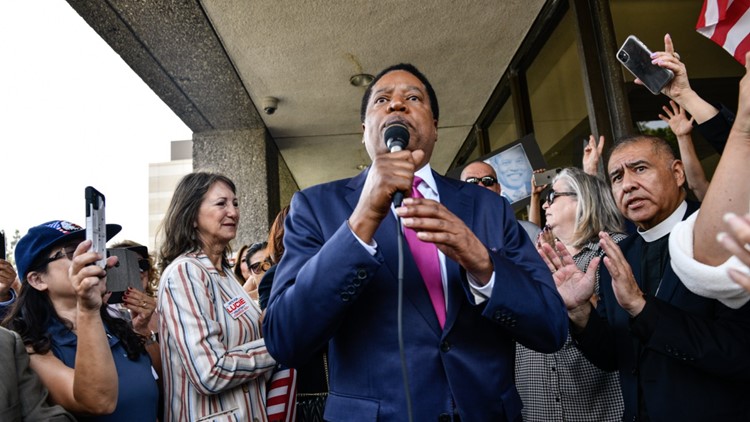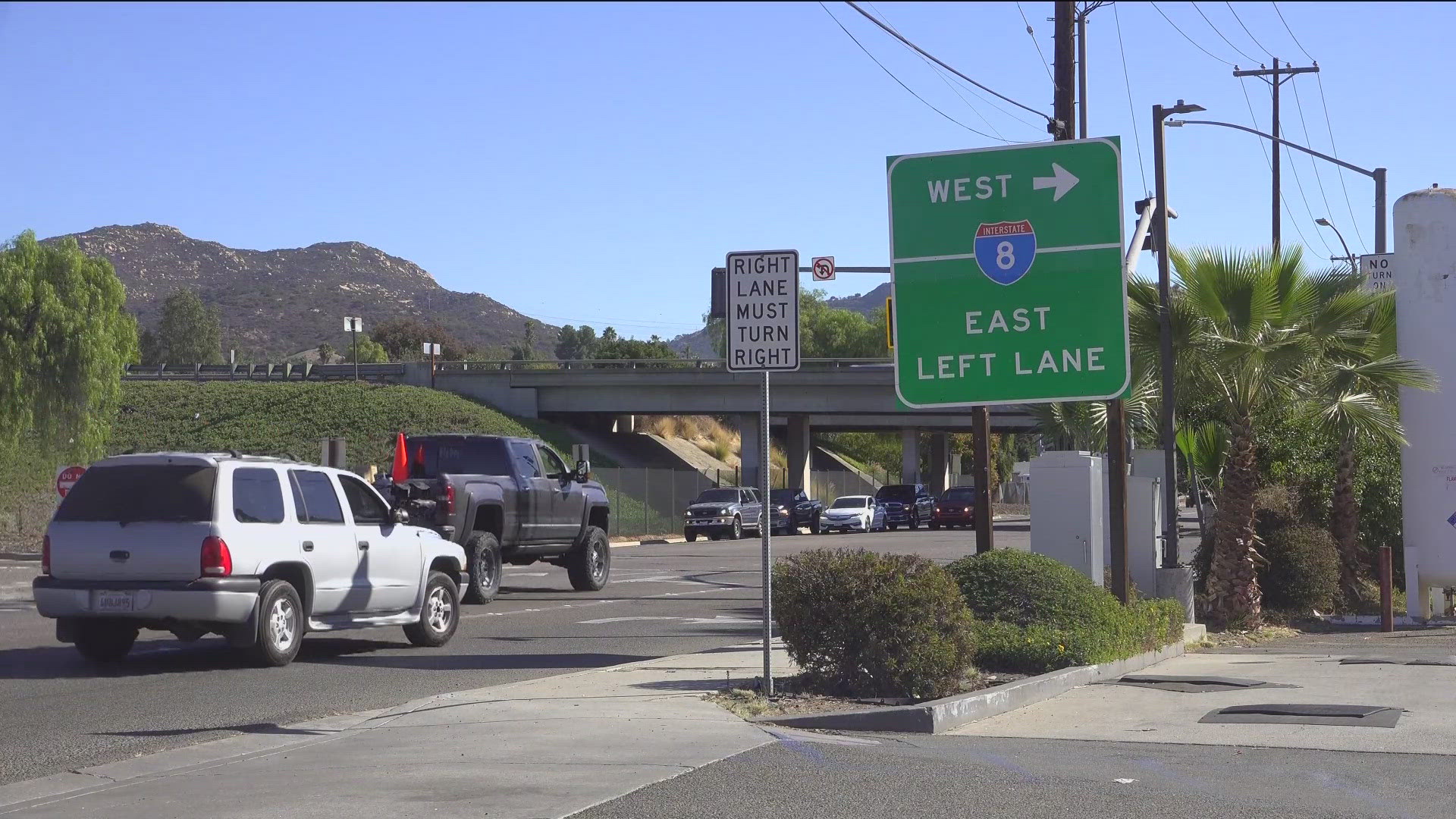CALIFORNIA, USA — Everyone’s entitled to their own opinions, but not to their own facts.
That holds true for politicians, including the candidates in California’s Sept. 14 recall election and Gov. Gavin Newsom. Campaigning during a resurgent COVID-19 pandemic and deadly, unprecedented wildfires, their approaches to the state’s problems can vary.
But the facts behind some of those issues don’t change. We look at some of the claims being made on the campaign trail and how they match up with reality:
COVID-19 masks
What the candidates said:
Larry Elder: In press conferences and interviews, he has said that young people are less likely to contract COVID-19, and that even if they do, their symptoms are likely to be mild: “The idea that we’re requiring children to wear masks, to me, is against science.”
Kevin Kiley: In an Aug. 25 debate, said that the harms of masks to a child’s development “far outweigh any benefits, and those benefits aren’t even very clearly established.”
The facts:
Earlier in the pandemic, the U.S. Centers for Disease Control and Prevention said there was a lower incidence of COVID among children, but that was likely due to less exposure with schools closed and to less testing. But more recent studies once schools reopened show that infection rates can be comparable, and in some settings higher, than in adults. According to the CDC, about 1 in 3 children hospitalized with COVID-19 in the U.S. were admitted to the intensive care unit — similar to the rate among adults.
Studies cited by the CDC show that masks and physical distancing have helped limit the spread of COVID-19 in schools.
COVID-19 vaccines
What the candidates said:
John Cox: In the Aug. 25 debate and in an interview with CalMatters, he said that COVID is 99.9% survivable and that vaccines work, so “if I’m vaccinated — which I am — do I really care if someone is unvaccinated?”
Cox also told CalMatters that natural immunity from having COVID-19 might be better than being vaccinated: “There’s a whole number of studies…that say that natural immunity is possibly superior to the vaccines.”
The facts:
The death rate from COVID-19 depends on a number of factors, including underlying health conditions and exposure levels based on where one lives or works. The World Health Organization cautions that estimating survival rates can be complex, given differences in how governments report coronavirus cases, plus asymptomatic cases that are never reported.
What we do know: There have been 4.5 million reported deaths worldwide out of nearly 220 million known cases, or about 2% of cases, according to Johns Hopkins University.
And according to a CDC study in Kentucky, unvaccinated people were more than twice as likely to contract COVID-19 a second time, compared to those who had gotten COVID-19 one time and were fully vaccinated.
Kiley: In the Aug. 25 debate, said California was the only state with a vaccine mandate.
Kiley also said that Gov. Gavin Newsom cast doubt on the COVID vaccines last October to score political points by saying he would not “take the FDA’s word for whether the vaccine is safe.” Kiley cited the U.S. Senate Health Committee chairperson as criticizing Newsom for “discouraging Americans from taking the vaccine” and “costing lives.”
The facts:
At least a dozen other states had announced vaccine mandates at the time of the debate, though not all were in effect.
Newsom’s comments last October came before FDA emergency use approval; the governor said California would do its own review. Sen. Lamar Alexander did call on Newsom to stop second-guessing the FDA, but he said that “could delay approval, discourage Americans from taking the vaccine and cost lives.”
Gavin Newsom: An ad from the anti-recall committee says that voting yes means electing an “anti-vaccine Trump Republican.”
The facts:
The highest polling replacement candidates — Republicans Cox, Elder, Kiley, Kevin Faulconer and Caitlyn Jenner, plus Democrat Kevin Paffrath — all say they oppose state-imposed vaccine mandates.
But they have also said they are all vaccinated, and encourage Californians to get the shot.
Climate change
What the candidate said:
Cox: In an interview with CalMatters, Cox said: “China and India have produced more pollution than the rest of the world combined.”
He proposed reducing their use of fossil fuels by shipping those nations liquefied natural gas produced in California. He also said: “The burning of natural gas does not significantly produce greenhouse gas.”
The facts:
According to the Global Carbon Project, China’s 2019 emissions were 11.2 billion tons a year, followed by the U.S. at 5.8 billion tons, the European Union at 3.2 billion tons and India at 2.9 billion tons. That means China and India together would total 14.1 billion tons per year, compared to 49.1 billion for the rest of the world.
On the impact of natural gas, the U.S. Energy Information Association says that while it is a relatively clean-burning fossil fuel, methane leaks from natural gas wells, storage tanks, pipelines and processing plants are a strong greenhouse gas.
Crime and justice
What the candidates said:
Faulconer: In an Aug. 4 debate, said that Newsom has “enabled the ‘defund the police’ movement.”
The facts:
Newsom has said that he wants to see police reform, but hasn’t said he supports defunding the police. In June 2020, he said he “supports legislation to track excessive use of force by police, and to require more training on implicit bias.”
In a July 2021 interview, he reiterated his position: “Don’t ever confuse me with the defund police movement.”
Elder: In an interview with The Sacramento Bee editorial board and in a Sept. 2 press conference, said that he doesn’t believe the police disproportionately use deadly force against Black people: “This business about the police engaging in systemic racism is false, it’s a lie. There have been many studies showing, if anything, that the police are more hesitant, more reluctant, to pull the trigger on a Black suspect than a white suspect.”
The facts:
A 2019 study found that Black men were 2.5 times more likely to be killed by police than white men, according to data from 2013 to 2018. For black women, the rate was 1.4 times more likely. And a study of data between 2015 and early 2020 showed that police shootings of unarmed Black people in the U.S. were three times higher than that of white people
Elder: in the CalMatters interview: “During this coronavirus pandemic, 20,000 convicted felons have been released under early release, presumably for compassionate reasons. I think it’s one of the reasons why crime has gone up.”
Cox: at a May 4 press conference, said Newsom “let 76,000 inmates out of jail with almost no warning.”
The facts:
While the state is giving 76,000 inmates — including 20,000 inmates who are serving life sentences and violent and repeat felons — the opportunity to reduce their sentences, they aren’t all being released.
“These changes do not result in the automatic release of any incarcerated individual,” Dana Simas, a state corrections spokesperson, told PolitiFact. “This is not an early release program.”
Instead, it’s an expansion of an existing program that allows inmates to reduce their time served by one-third instead of one-fifth, which has been the law since 2017, for good behavior and for participating in rehabilitation programs.


Other claims
What the candidate said:
Kiley: In an interview with CalMatters, he said a lot of Californians live in “energy poverty,” which he defined as when 10% or more of one’s income is spent on energy.
The facts:
“Energy poverty” is more broadly defined as “insufficient access to affordable energy.” What Kiley is referring to — the percentage of income a household spends on energy costs — is known as the energy burden. According to 2019 data from the Department of Energy, that number in California is closer to 4% to 6%.
What the candidate said:
Paffrath: In an interview with CalMatters said, “It’s unfortunate that we have a governor that is more interested in himself or consolidating power in his office. Look at SB 7 as a perfect example, it was supposed to accelerate housing efficiency and it just consolidates $15 million developer projects into his office.”
The facts:
SB 7, signed into law in May, was proposed by state Senate leader Toni Atkins so it wasn’t quite a consolidation of power by Newsom. While the legislation does allow the governor to expedite certain projects, it’s not a new concept. It builds on a 2011 law that relaxed strict California Environmental Quality Act regulations for eligible housing, clean energy and manufacturing projects by lowering the threshold to include projects of more than $15 million.
What the candidate said:
Elder: In an interview with CalMatters said: “The reason we’re having a net migration out of California for the first time in our state’s history — and we’re 170 years old — is that middle-class people, people making between $50 and $100K, are leaving.
The facts:
This isn’t the first time California has seen negative net migration, or out-migration. There has been out-migration between 1992 and 1996, and between 2004 and 2010, according to the Public Polling Institute of California. In 2020, the state recorded its first population decline in at least 120 years, according to Census data.
What the candidate said:
Elder: In a campaign ad, said Newsom “closed tiny stores, but kept big chains open.”
The facts:
Newsom ordered strict lockdown measures early in the pandemic in March 2020, but, by July of last year, allowed some to reopen with safety measures in place. The businesses were reopened based on industry and COVID-19 transmission rates, not size. But as a result, many smaller businesses were shut down longer.
What the candidate said:
Elder told the Sacramento Bee that he agreed President Joe Biden was elected “fairly and squarely.” One week later, he tweeted that he believed there were “shenanigans in the 2020 presidential election.”
The facts:
The 2020 elections were found to be “the most secure in American history,” according to a statement from a coalition of government and election industry officials.



